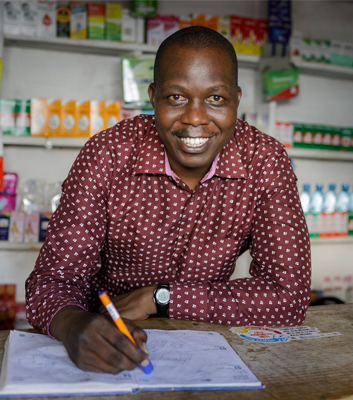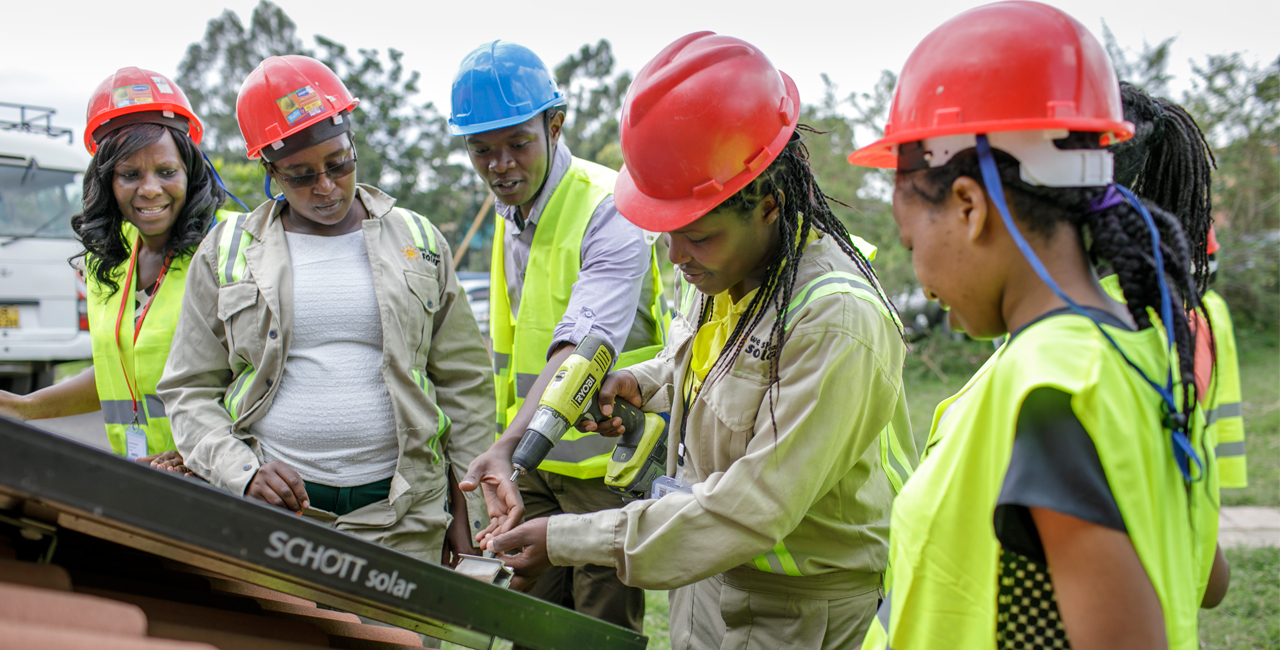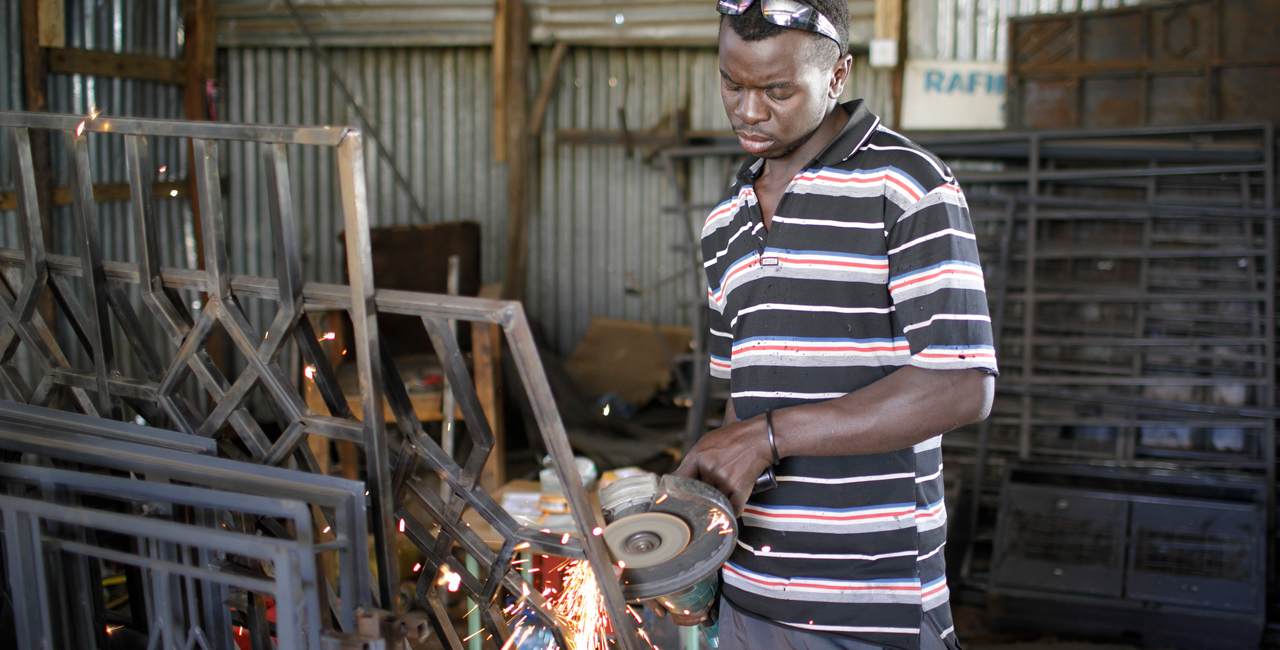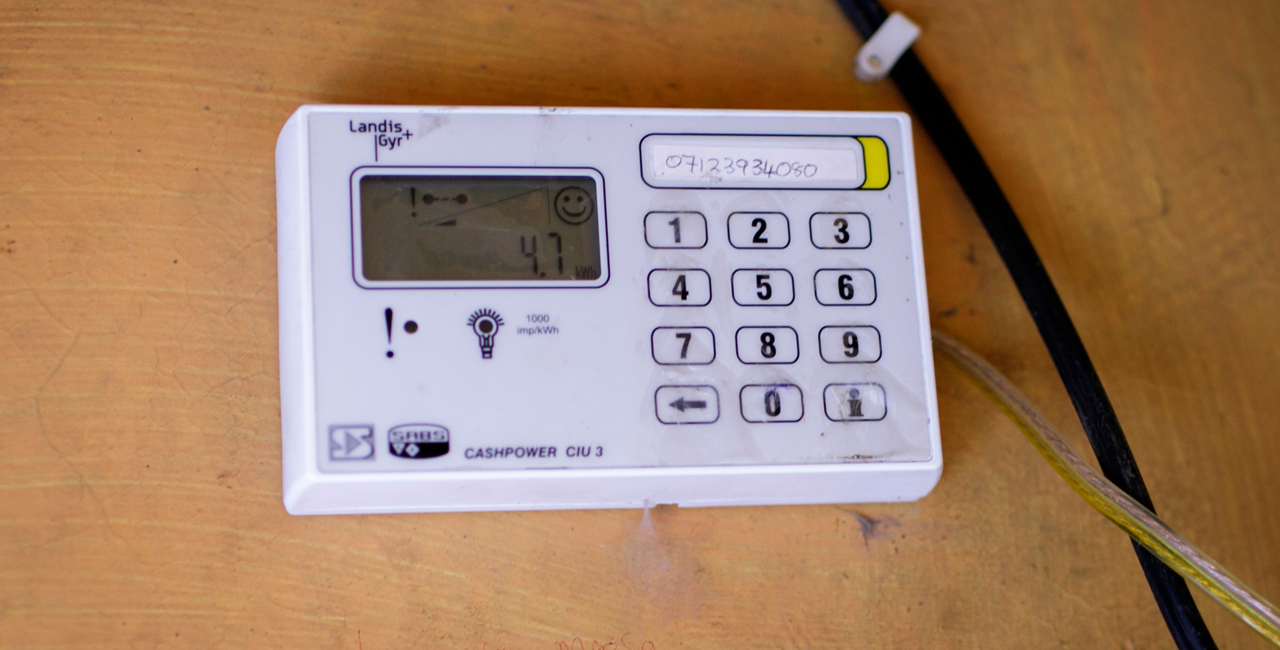Kenya
A brighter future for businesses
In the Kenyan village of Talek, where usually just a few cattle and goats roam around, today is a hive of commercial activity. Wednesday is market day, and traders have set up stalls selling fruit, vegetables, shoes and clothes on the village’s central square. Talek is 250 kilometres west of the Kenyan capital Nairobi, on the outskirts of the Masai Mara national park, and has a population of 1,500.

Large numbers of Masai have travelled to Talek from surrounding villages. In Joshua Saitoti’s pharmacy on one side of the square, an elderly man with a traditional red-checked scarf around his neck asks for a medicine in a hoarse voice. He turns his gaze to the small television set in the shop as Saitoti takes some tablets off a shelf and tips four into a small brown paper bag. The cost is 50 Kenyan shillings (just over EUR 0.40). ‘I bought the TV so that my customers can watch it if they have to wait. And I can watch too when the shop is quiet’, Saitoti explains. However, this only became possible once his shop was connected to the local electricity grid.
A long-overdue refrigerator for medicines
Talek has had electricity since mid-2015, and Joshua Saitoti’s pharmacy was one of the first shops to benefit. ‘Now I can even run a refrigerator’, he says; perishable medicines have to be kept cold to keep them fresh. Saitoti used to close his shop at 7:00 p.m. every evening, but now he can stay open three hours longer because – at last – he has electric light.

The electricity for the local grid is generated just 100 metres away from the village square. The sign above the entrance to the plant reads ‘Talek Power – Supplying Clean and Reliable Electricity’. It’s early afternoon, and the sun is beating down – perfect conditions for the solar panels installed over an area the size of a football pitch that feed the 50-kilowatt plant. The adjoining small building houses power inverters supplied by the Kassel-based company SMA Solar, 72 batteries supplied by Hoppecke Batterien GmbH in Brilon in the German federal state of North Rhine-Westphalia, and a diesel generator. The generator is used only in exceptional circumstances, such as cloudy weather, or when the demand for electricity is particularly high.
Using electricity to help combat poverty
The remote Masai Mara is one of the regions of Kenya that will not be connected to the national grid for many years – if ever. ‘And that’, says Jasmin Fraatz of the Deutsche Gesellschaft für Internationale Zusammenarbeit (GIZ) GmbH, ‘is an obstacle to economic development and hampers efforts to combat poverty.’ Kenya considers itself an emerging economy, but one third of its population of 48 million still live in absolute poverty and earn less than 200 Kenyan shillings a day – around EUR 1.80. Working on behalf of the German Federal Ministry for Economic Cooperation and Development (BMZ), GIZ has set up a mini-grid for Talek, benefiting business people and small businesses in particular.

Until recently, the village had a single solar kiosk operated by the Berlin-based company Solarkiosk. Local people can use it to charge their mobile phones and print and copy documents. The kiosk also sells solar lamps, so that households can have light in the evenings without having to use expensive and hazardous oil lamps and their children can still do their homework. This is a small step forward – but one solar kiosk is not enough to transform the local economy.
Costs covered through electricity bills
George Ndubi from PowerGen, the firm operating the Talek solar power plant, says ‘We currently have 72 customers, including 45 business people.’ Talek Power has capacity for more, though: it can cater for up to 300 customers. The aim of the pilot project is to demonstrate that private companies can operate such solar-hybrid mini-grids sustainably and profitably. Talek Power’s charges reflect the cost of generation, with a connection charge equivalent to around EUR 100 and a kWh price for electricity of 70 Kenyan shillings (around EUR 0.60). These charges cover the investment and operating costs and enable the company to build up reserves. To put them into context, the kWh price is currently just over twice that billed in Germany.
GIZ spent EUR 130,000 on constructing the pilot plant, with Narok County providing the land and workers to build the plant. The German charity Welthungerhilfe also supported the project, for example by running local energy-saving campaigns. GIZ now plans to provide direct support for a further 20 solar-hybrid mini-grids in northern Kenya.

GIZ will be providing initial advisory services in the run-up period and then leave the construction and operation of the plants to private operators. In the capital Nairobi, GIZ is also providing instructors and teaching materials to tackle a further problem – Kenya has very few solar technicians. In fact, there are thought to be no more than around 160 across the country, significantly fewer than are needed. At Strathmore University in Nairobi, young women and men are now learning how to plan, build, maintain and operate a solar-hybrid mini-grid. One of the trainees is 32-year-old Elizabeth Kavuu Kiitu, mother of two boys aged 7 and 1. She works for the state electricity company, but in her spare time, she has joined forces with a cousin to set up her own business and sells solar lamps for houses and gardens.
Training more solar technicians
‘Solar power currently accounts for less than 5% of all the electricity generated in Kenya. That’s nowhere near enough, and we need to increase the share rather than relying more heavily on fossil fuels’, says Kiitu. Her views are at odds with the plans of the Kenyan Government, which wants to increase power generation from coal and gas and is even considering nuclear power to help meet Kenya’s high demand for electricity. At the moment, geothermal energy and hydropower each account for around 35% of the electricity generated in the country, and there are also diesel generators. Solar and wind power are very much minor players in the energy market, despite the fact that solar radiation in Kenya is around twice as high as it is in Germany. This is one reason why, with support from GIZ, training courses like those run in Nairobi are due to be rolled out in other Kenyan cities too, as GIZ’s Jasmin Fraatz reports.

The impact of the mini-grid is already visible in Talek – and not just in the pharmacy. As project manager Jasmin Fraatz reports, ‘Nearly 40 new shops and businesses have been set up and around 125 jobs have been created. And these figures are increasing all the time.’ A welding machine can be heard sizzling in Fatuma Aden’s workshop. One of her three employees is putting the finishing touches to a gate that a local home-owner has ordered from this determined businesswoman. Without the local mini-grid, Fatuma Aden would not have been able to develop her small business, and a simple solar panel alone would not have generated enough electricity to run the energy-hungry welding equipment and grinding machine.
Aden explains that she used to rely on a diesel generator, ‘but if it broke down, I lost business.’ Now, thanks to her steadily improving financial position, the 32-year-old entrepreneur plans to pre-produce gates and window grilles rather than only making them to order. Aden, who has five children, smiles ‘once I was connected to the grid, my turnover increased from 10,000 Kenyan shillings a month to 15,000’. That is the equivalent of around EUR 130 a month in a country with an average annual per capita income of around EUR 1,400.
Solar power boosts business
Customers in Talek have to pay for their electricity in advance using a token from a local bank or via mobile phone credit. The actual electricity meter is mounted up above the respective building on the power pole, but down in the shops, such as Joshua Saitoti’s pharmacy and Fatuma Aden’s welding business, a small box labelled ‘Cashpower’ is installed. The display shows the customer’s power consumption and remaining credit. When the credit runs low, customers can use their token’s code to top up their account via a keyboard.

Joshua Saitoti reports that his pharmacy has been doing much better business since the advent of solar power: ‘My sales are up 50%’, he says, ‘but the electricity costs far too much. 50 Kenyan shillings would be appropriate.’ After all, the pharmacist is aware of what electricity costs elsewhere in Kenya. The state electricity supplier, Kenya Power, also operates standalone solutions like the mini-grid in Talek, but there the electricity is produced by diesel generators. In such cases the cost is subsidised, bringing the kWh price down to just 22 Kenyan shillings.
GIZ project manager Jasmin Fraatz does not want to see such heavily discounted prices, though, because they would mean that the local solar power plant would be unable to cover its costs., She argues that, ‘Ultimately, electricity generated from diesel ought to cost at least 50 Kenyan shillings per kWh – and in fact even 80 shillings if you factor in the environmental pollution.’
Contact: Jasmin Fraatz > Jasmin.fraatz@giz.de
September 2017
